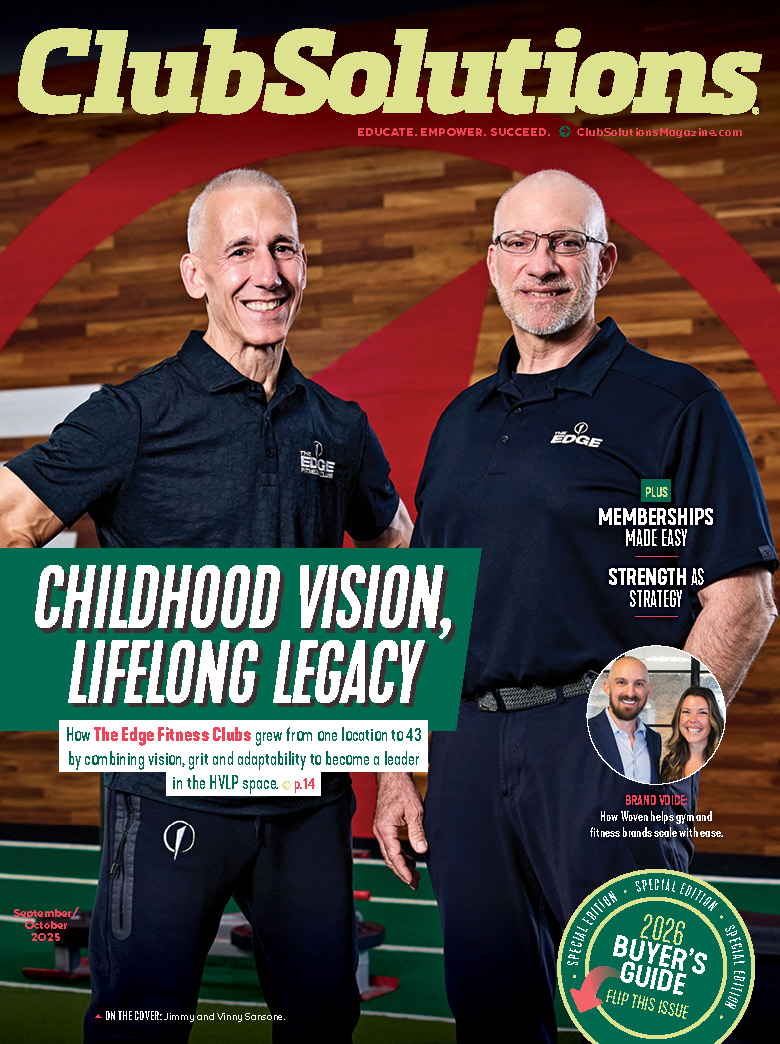 FIT: Functional Integration Training — training movements, not individual muscle groups
FIT: Functional Integration Training — training movements, not individual muscle groups
Like all industries, the fitness industry has trends and “buzz words.” Nowadays, functional training is the new buzz word, and is even on ACSM’s top 10 list of fitness trends for 2014.
Functional training means that it’s transferable to either activities in daily life or a sport. It has its origin in rehabilitation and was first introduced by physical therapists. Later on, it was incorporated into “normal” training, and is now frequently used for various types of exercise.
But which training types are actually functional, and which ones are the best? It is easy to understand the lack of a mutual agreement, as it all depends on the person doing the exercise — a soccer player, a gymnast or a grandmother wanting to play with her grandchildren all have different needs when it comes to which type of training will improve their performance in their chosen activity or sport. What makes something functional for one individual might not be functional for the next. Functional training is aim-specific.
Functional Integration Training (FIT) couples strength training with core stability and mobility to increase the intensity and improve the carry-over effect to daily activities. The emphasis is on movements, not individual muscle groups, through working in all the anatomical planes, with various starting positions and with different velocities. Incorporating components of endurance, speed, balance, strength and mobility training in workout programs improves all biomotor abilities, builds high levels of functional strength and neuromuscular efficiency. The overall goal is to enable the body to move with fluidity, strength, power and freedom.
Mobility: The Quality of Moving Freely
Mobility and flexibility are often used synonymously, although they are not the same quality. Mobility is range of motion under specific circumstances, whereas flexibility is non-specific to movements and refers to the amount of range of motion about a joint. Flexibility is merely a component of mobility. For example, one can have great hamstring length (flexibility), but still be unable to perform functional movements properly or without compensation.
As in all types of training, the principle of specificity also applies to functional integration training. Your clients will become better at the exercises as their training progresses. In a group setting one will meet individuals with different aims, needs and starting points. Therefore, one will have to generalize. In modern life a great deal of our waking hours are spent in a seated position. This passive lifestyle doesn’t give us the natural physical challenge, thus leaving us with less than optimal mobility, strength and endurance. Due to this, the mobility around the hips, spine and shoulder girdle, especially, is often poor.
Improving ones functionality and mobility can be beneficial in several ways. If you want to increase your strength or power, you need the adequate mobility. For example, if you’re looking to improve your 10k run, you need adequate mobility to have efficient strides. Or if you want to be able to play with the kids, you need adequate mobility to lift them up from the ground and place them on your shoulders without hurting yourself. Knowledge about these benefits will help motivate the participants and make the training challenging, yet fun.
On the basis of the training principle of overload, the participants should be motivated to step out of their comfort zone. Not merely during endurance and strength training, but also when it comes to functional integration training. Needless to say, it’s not all that comfortable outside the comfort zone! However, it’s always easier for your members to push their limits if they know what they can accomplish by doing so.
Kristin Lervik Larsen, the product manager of the Corebar® Concept, has a bachelor’s degree in physiotherapy and a master’s degree in sport & exercise physiology. Larsen also has 12 years of experience as a personal trainer.
Stay ahead in the fitness industry with exclusive updates!
Rachel Zabonick-Chonko is the editor-in-chief of Club Solutions Magazine. She can be reached at rachel@peakemedia.com.










